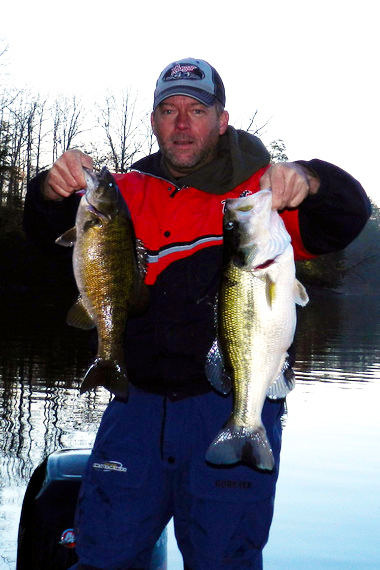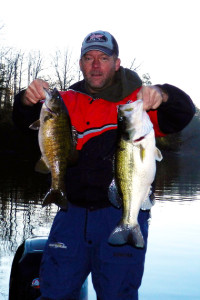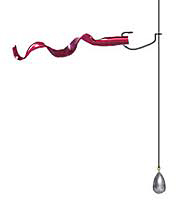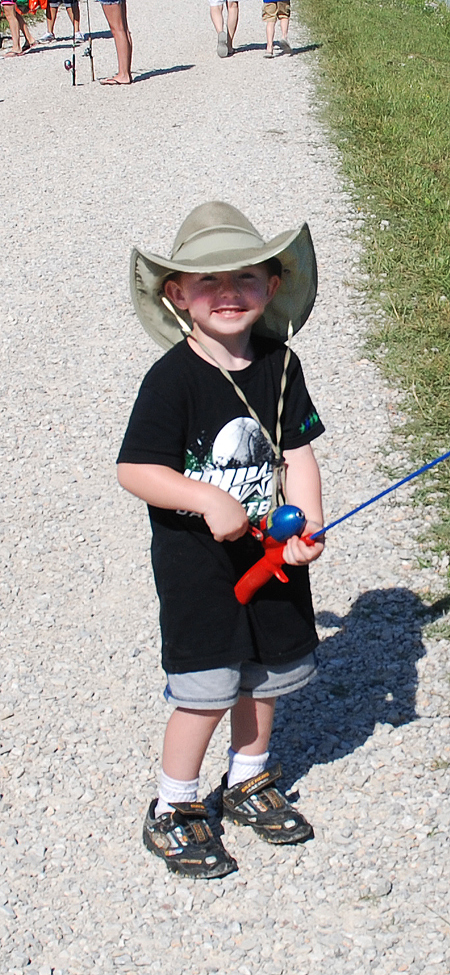
By Chris Erwin
On Jan. 12 while most of us were trying to stay warm Scott Doan, of Morehead, loaded his boat and headed for Laurel River Lake in hopes of catching a smallmouth. It had been a few years since he had been on this lake in the cold months of winter. However, after one of the coldest snaps we have had in 20 years he knew it could be a lofty goal but he had his heart set on giving it a try.
The air temperature was 50 and the water surface temperature 44. It promised to be a sunny day with wind at 10 miles an hour and barometric pressure at 29.94.

Doan put his boat in at Holly Bay, which is on the main lake. Much of this part of the lake is deep. When you are thinking smallmouth this time of year, fishing deep or at least near deep water usually goes hand and hand.
Like most of us, his first thought was to fish the bank line knowing you want to be close to deep water during this time of year. He also spent some time fishing points. He tried a handful of baits — a jig, jerkbaits and an Alabama rig dressed with swim baits. He was drawing a blank. No strikes.
One thing he did notic was the bait fish were in 30 feet of water. At this point he had a choice: He could have just move to the next point and hope for better results or he could follow the contour of the lake at the 30 foot elevation and see what he could mark with his depthfinder.
One thing you should take from this article and other articles covering coldwater fishing is the bass are not in the “predator mood’ this time of the year. They are cold and moving slowly, many times in a group. They rarely want to chase anything so fast. Moving baits are usually not productive. For this reason it makes good sense to mark bait fish and see if you can spot any larger fish in the school.
That is exactly what Doan did. He followed the 30-foot contour marking bait fish and trying to see if he could spot any larger fish in the school. As he rounded the next point the bait fish became visible on his screen. The fish were rising off the 30-foot bottom marking up to about 20 feet and he could see what appeared to be some larger fish in the school.

Ok gang, what would you throw once you think you have found some fish? They are many choices and any of the classic deep water bait could work. Doan looked at where he felt the larger fish were positioned and decided to go to a drop-shot rig. If you look at the general setup of a drop-shot rig, it’s easy to see you can set the distance from the bottom putting the bait right in front of the fish.
It’s important to note when the water is this cold (under 50 degrees) the bait doesn’t need a lot of action. The strategy is put the bait in the face of the fish and hold it there. The movement of rod tip and movement of the boat many times is all that is needed to spark a strike.
Doan ultimately decided to use a four-inch watermelon worm on his drop-shot rig and in the next two hours he landed a 6.5 pound largemouth, a three pound 10 oz. smallmouth, 3.5 pound smallmouth and another three pound smallmouth. Once the sun got higher in the sky he told me that the fish moved into 70 feet of water and he elected to call it a day.
I asked Scott what piece of advice he would like to pass along to anyone wanting to try or improved fishing during the winter months. This is what he told me: “Trust your depthfinder and fish where there are bait fish. Fish slow. Really slow, and use light line. And, dress in layers so you can stand the harsh weather.”




Be the first to comment